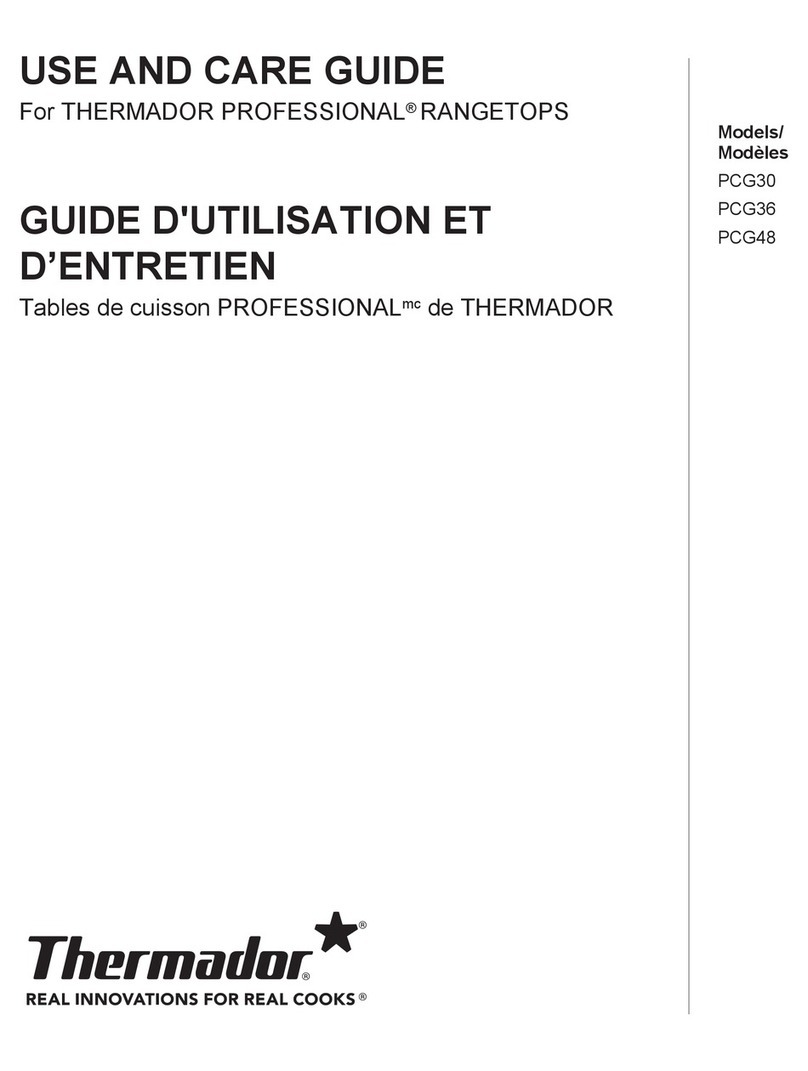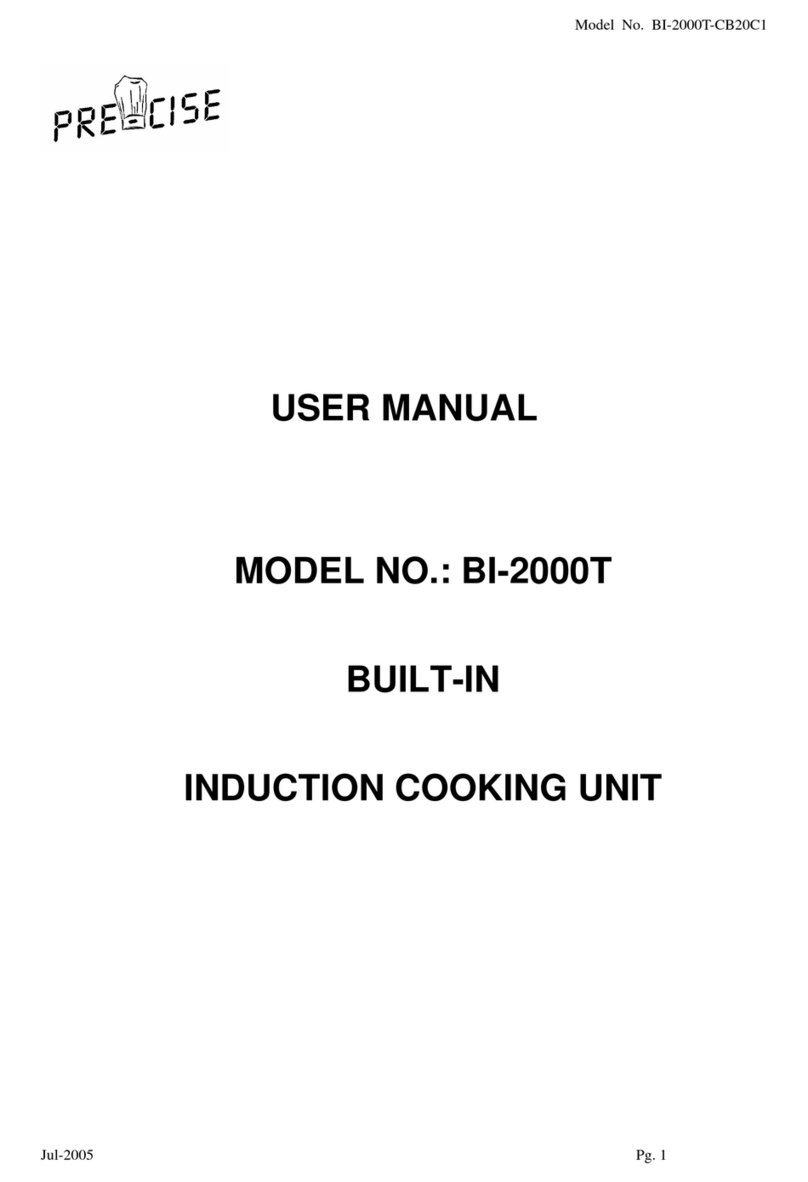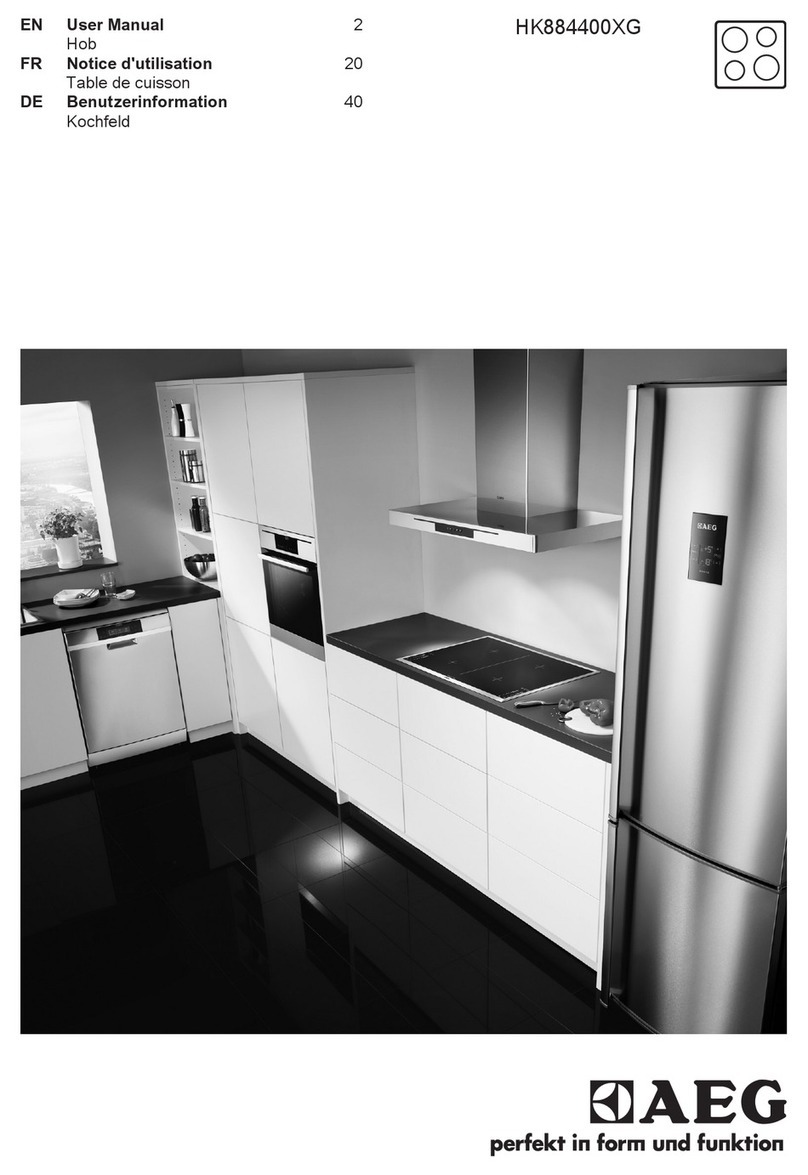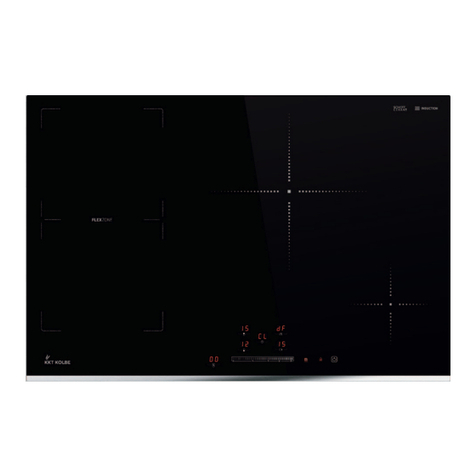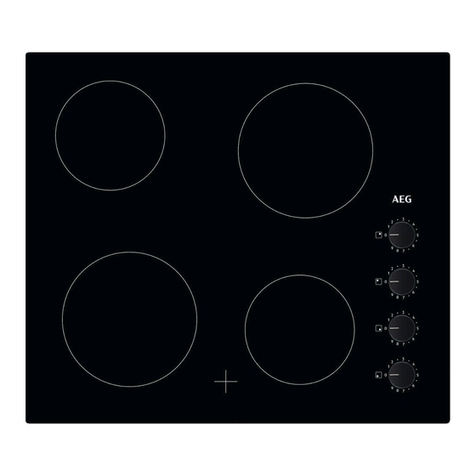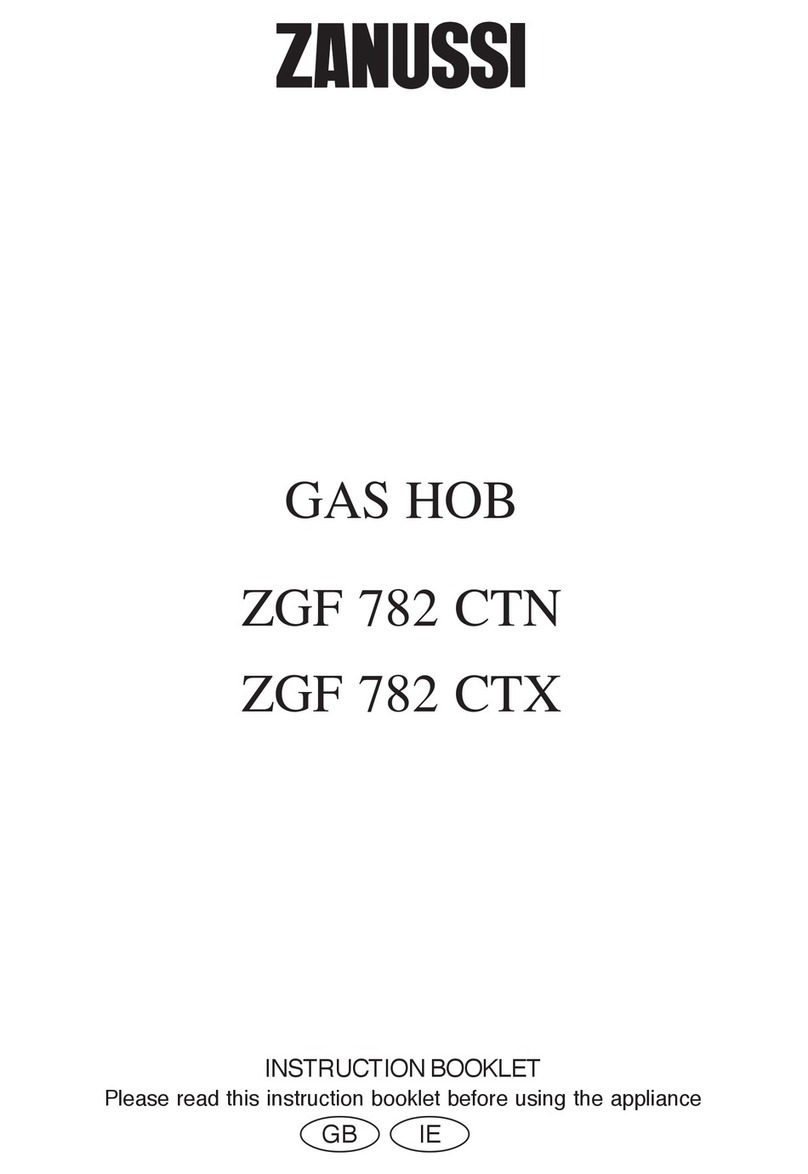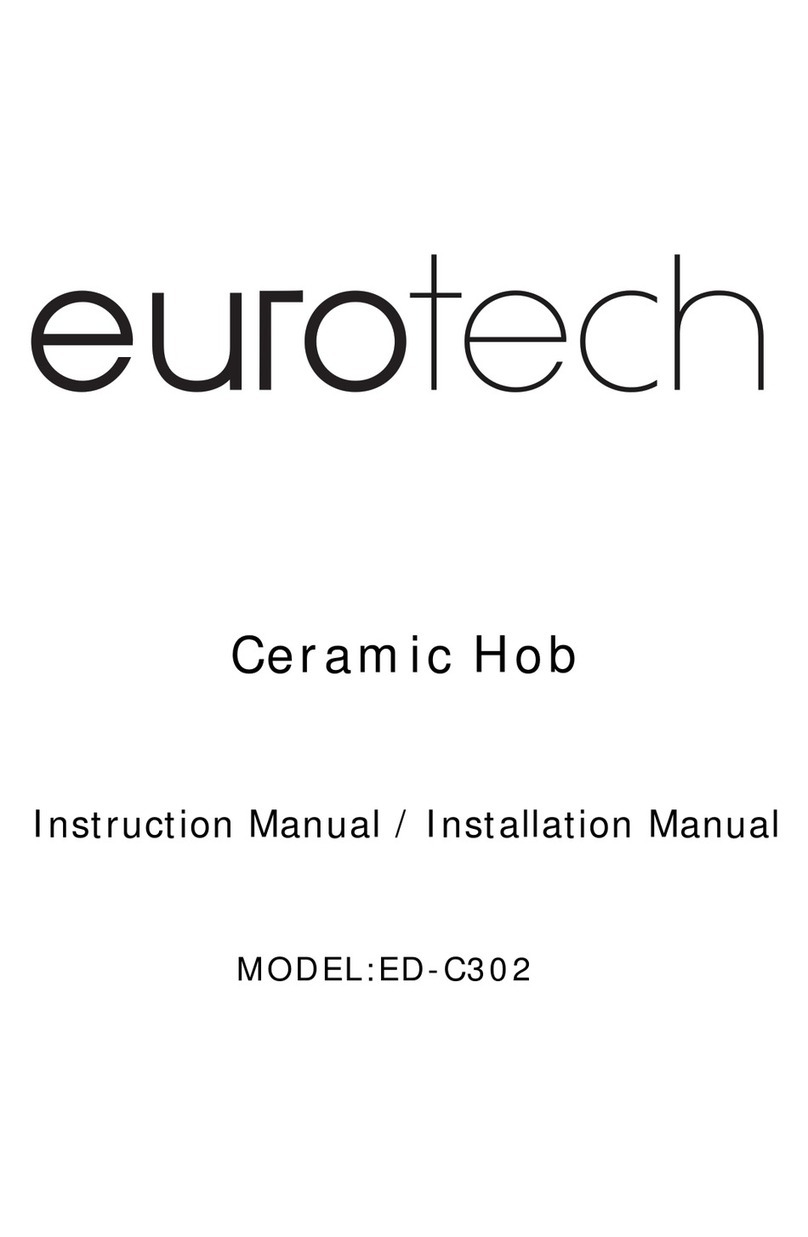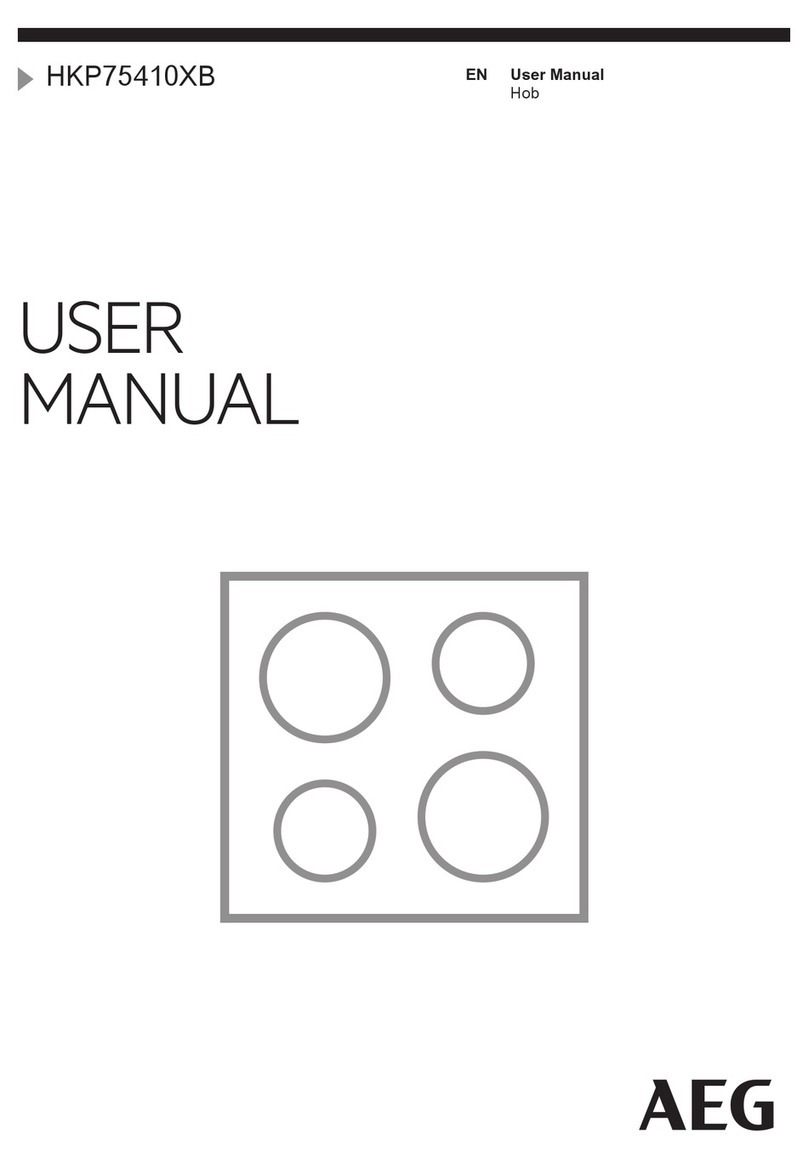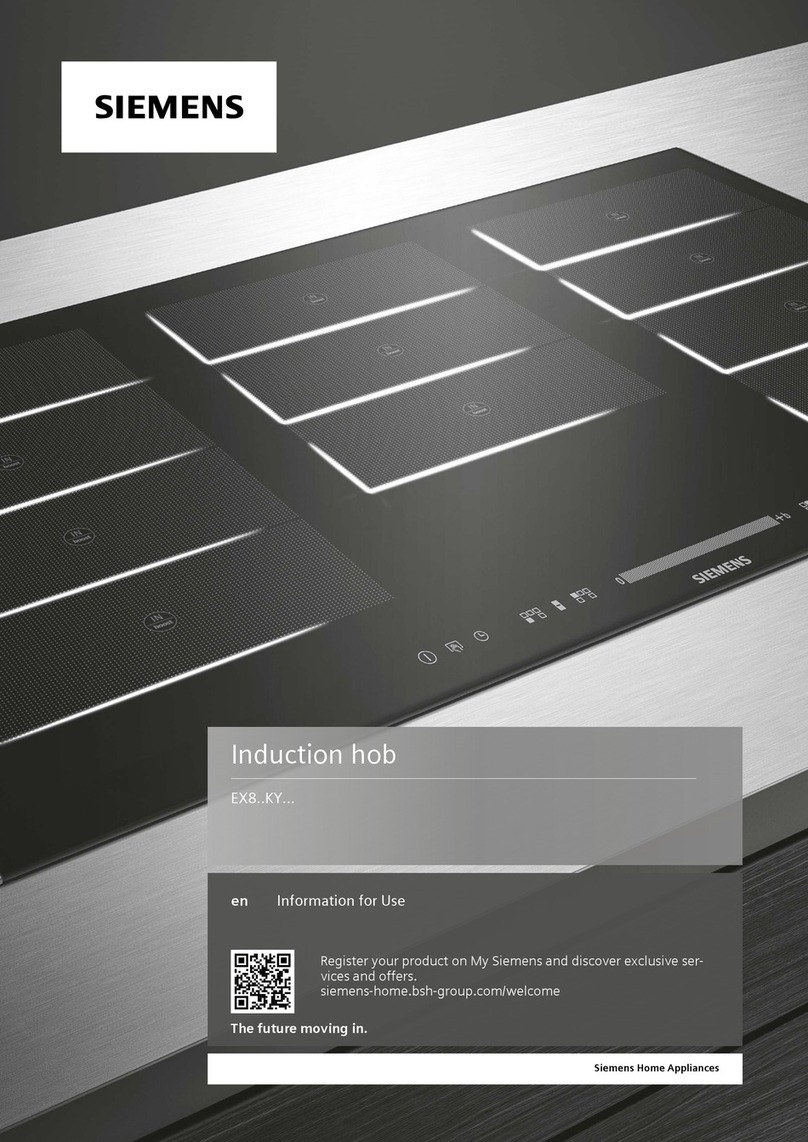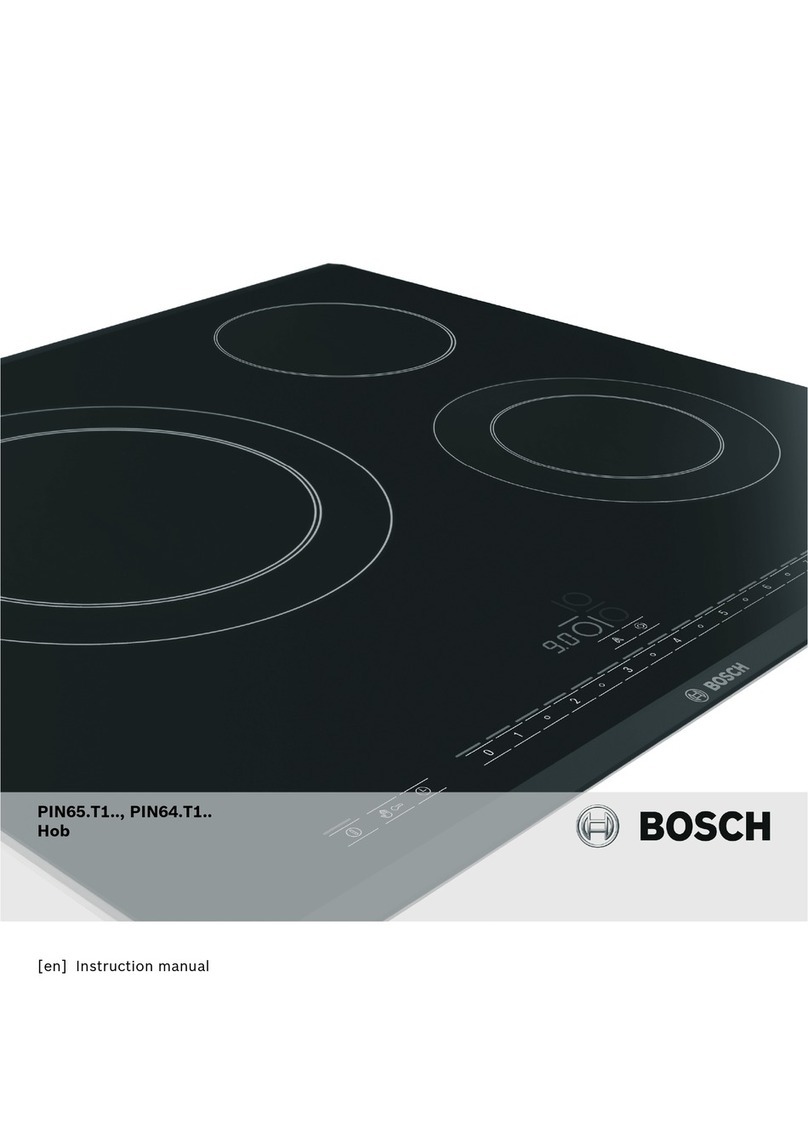
Installation Instructions English | 6 |
STEP 2: Cabinet Preparation
1. To ensure professional results, the cabinet and
countertop openings should be prepared by a qualified
cabinet worker.
2. The clearances shown in Figure 1 are required. The
same clearances apply to island installations, except
for the overhead cabinets, which must have a space
wide enough to accept the island hood.
3. The rangetop is designed to hang from the countertop
by its side flanges. The countertop however, must be
strong enough to support this rangetop. It may be
necessary to add a supporting cleat along each side
(see Figure 2) or a 2 x 4 corner brace (see Figure 3
and Figure 4 and Detail A). Another alternative would
be to construct a deck to set the rangetop on.
4. The rangetop can be installed in various positions with
the front either flush or projecting, depending on the
countertop’s depth. (See Figure 5, side view of
rangetop; see Figure 3, Figure 4, Figure 6 and Figure 7
for alternate mounting positions.)
5. The gas and electrical supply must be located in an
area that is accessible without requiring removal of the
rangetop. The appliance electrical power cord and gas
pipe connection are located as shown in Figure 5 and
Figure 10, respectively.
6. When installing against a combustible surface, a Low
Back guard is required. A THERMADOR Low Back
guard must be purchased separately (see “STEP 6:
Backguard Installation” on page 13).
7. When using the Flush Island Trim, THERMADOR®
recommends a minimum 12'' (305 mm) rear clearance
to a combustible surface (see Figure 1, Clearance
Requirements). Clearances from non-combustible
materials are not part of the ANSI Z21.1 scope and are
not certified by CSA. Clearances of less than 12''
(305 mm) must be approved by the local codes and/or
by the local authority having jurisdiction.
8. When the rangetop is installed against a combustible
side wall a minimum clearance of 5'' (127 mm) is
needed from the side of the rangetop to the wall.
9. The maximum depth of over head cabinets installed on
either side of the hood is 13" (330 mm). Wall cabinets
must be 18'' (457 mm) above the countertop.
10. There is a 36'' (914 mm) minimum clearance required
between the top of the cooking surface and the bottom
of an unprotected cabinet. A 30'' (762 mm) clearance
can be used when the bottom of the wood or metal
cabinet is protected by not less than 1/4'' (6 mm) of a
flame retardant material covered with not less than No.
28 MSG sheet steel, 0.015'' (0.38 mm) thick stainless
steel, 0.024'' (0.61 mm) aluminum, or 0.02'' (0.51 mm)
thick copper.
Flame retardant materials bear the mark:
UNDERWRITERS LABORATORIES INC.
CLASSIFIED MINERAL AND FIBER BOARDS
SURFACE BURNING CHARACTERISTICS
followed by the flame spread and smoke ratings. These
designations are shown as “FHC (FIame Spread/
Smoke Developed).” Materials with “O” flame spread
ratings are flame retardant. Local codes may allow
other flame spread ratings. It is the responsibility of the
installer to ensure installation is in accordance with
these ratings.
11. Establish the centerline of the rangetop’s desired
location. It should be the same as the center of the
overhead ventilation hood.
12. Cut the openings for the following installations:
• Wall installation, see Figure 3.
• Island installation, see Figure 4.
13. For installation of a 48" rangetop above two side-by-
side THERMADOR®warming drawers (WD24), refer
to Figure 8. Completing the installation as per Figure 8
will result in the left and right edges of the rangetop
being aligned with the left edge of the left-side warming
drawer and right edge of the right-side warming drawer.
If different alignment is desired, the 1⅞'' (48 mm)
horizontal distance between warming drawer cutouts
may be varied. However, maintain at least a 1⅛''
(29 mm) distance to avoid interference between the
warming drawers. Attach a 90-degree elbow to the gas
rangetop inlet pipe. All above-the-countertop
clearances must be maintained, as shown in Figure 1.
NOTES:
• If a solid side cabinet wall exists on one or both sides,
you will need to notch the front corner of the cabinet to
match the countertop notch and to allow clearance for
the rangetop front (see Detail A, Figure 3 and
Figure 4).
• If a supporting deck is used, the sides or bottom of the
cutout may be solid combustible or non-combustible
material. If the bottom is solid, provide a 12" by 12"
(305 x 305 mm) cutout in the left rear corner of the
supporting deck. This will provide clearance for the gas
inlet and power cord.
• Always keep appliance area clean and free from
combustible materials, gasoline and other flammable
vapors and liquids.
• Do not obstruct the flow of combustion and ventilation
air to the unit.
